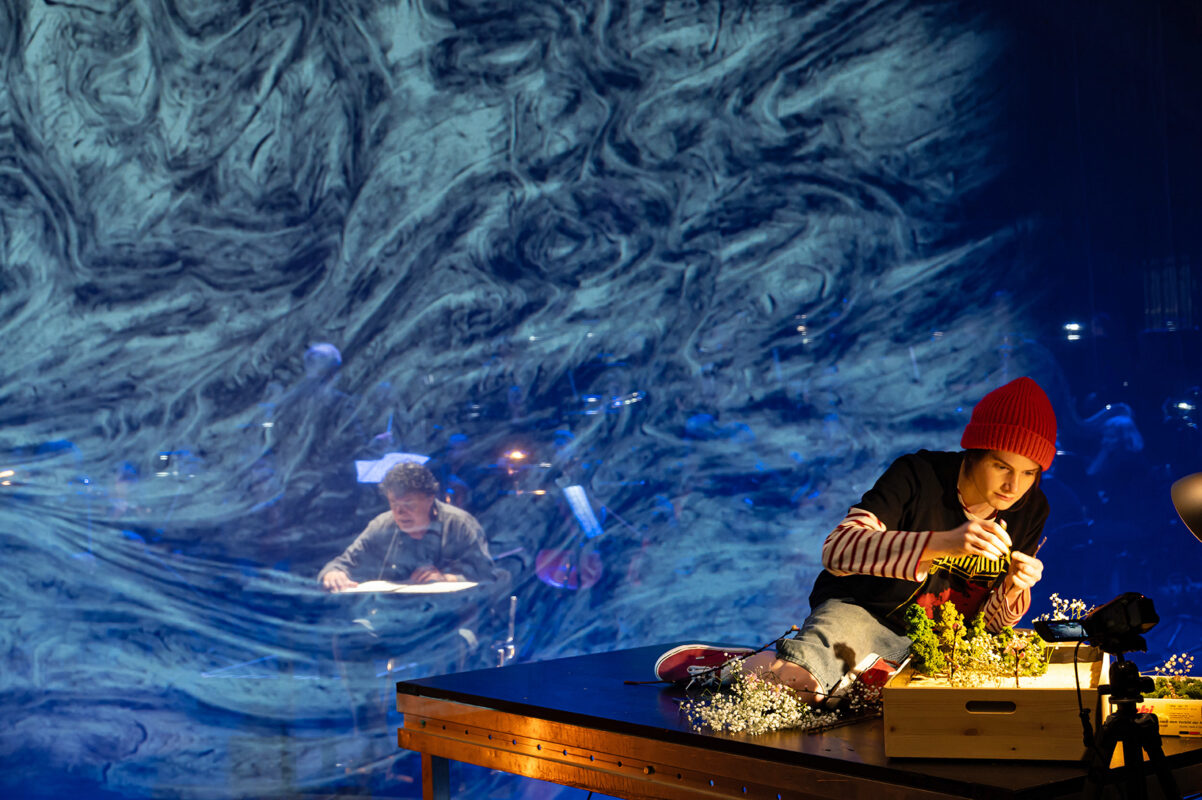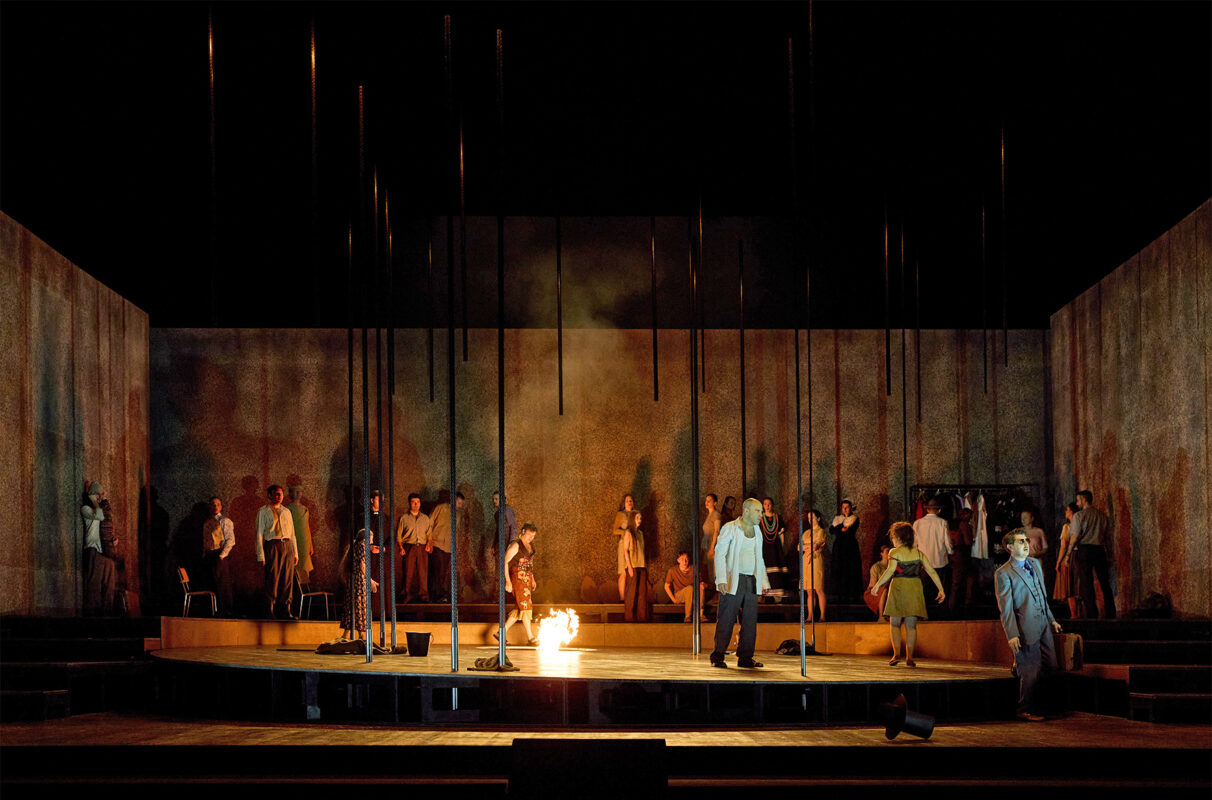"La Danse des morts" with over 100 young people
Arthur Honegger's oratorio "La Danse des morts" was the focus of an ambitious educational project that came to a brilliant conclusion at the end of June in the Elisabethen Open Church in Basel.
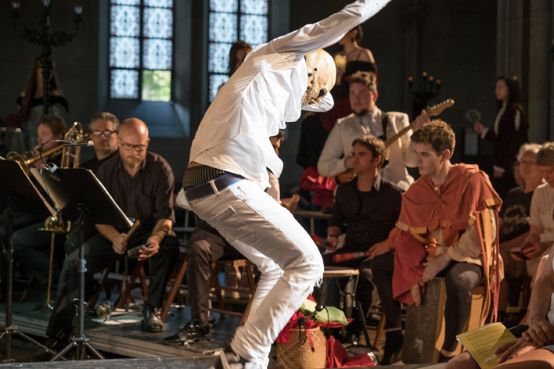
It all starts with a thunderclap was the name of the education project of the Basel Chamber Orchestra, the choir of Muttenz High School and classes 2Ea and IBK 1f of the Center for Bridging Courses in Basel. It was the choirmaster and school musician Christoph Huldi who gave the Basel Chamber Orchestra the bold idea.
Together with director Salomé Im Hof, over a hundred young people explored the question of how death is dealt with in different cultures in forty workshops and countless intensive lessons. Dance, scenic and musical snapshots were created. The encounter with the refugees was particularly fruitful, as one high school student said when asked what he liked best: "Working with the bridge class! Communicating with people who speak Turkish, Somali or Persian. That connects people."
The delicate and the conciliatory
Death is undoubtedly a "hot" topic that the young people had to deal with and master: it is not exactly a favorite in young people's minds and Arthur Honegger's brilliant oratorio La Danse des morts on a text by Paul Claudel, which was premiered by Paul Sacher in Basel in 1940, is difficult music for young people, as Huldi explains in conversation.
Claudel was inspired by Hans Holbein's Basel Dance of Death cycle and put together a series of Old Testament texts. The oratorio begins with the vision of the resurrection of Israel, in which God brings the bones lying around back to life. An instrumental roll of thunder at the beginning of Honegger's music symbolizes the presence of God. It also gave the music theater evening its title.
The creation of the world, the resurrection of the people of Israel and the Christian understanding of the resurrection from the dead combine to create a magnificent musical work of art. However, it was not only the theme of the cycle that was delicate for the young protagonists, but also Honegger's setting. Rhythmically delicate motifs, contrapuntally elaborated sequences, from marches to bizarre waltz rhythms or popular songs such as Sur le pont dʼAvignon pervade the work; and this with a complex harmonic structure.
How did Christoph Huldi manage to keep the young people "happy"? "For one thing, I enjoy the trust of the students who know my projects," he explains. "They trusted that what we were planning was something good. On the other hand, I combined the Funeral Music for Queen Mary by Henry Purcell, resounding choral music that is good and enjoyable to sing."
Undoubtedly a good idea, as only two students dropped out. What's more, this "palatable" choral music audibly appealed not only to the pupils but also to the audience. Purcell's conciliatory music from youthful throats noticeably lightened Honegger's gloom. The hour-long musical theater thus proved to be a coherent "Gesamtkunstwerk" performed and sung at a high level.
-
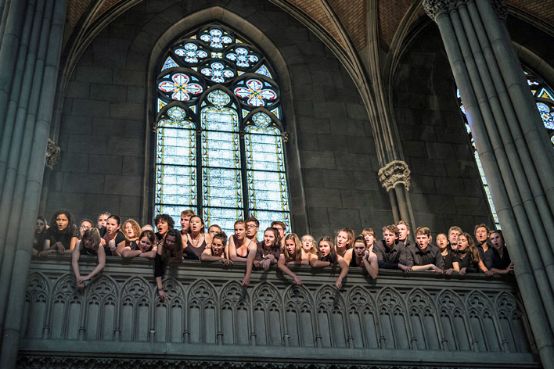
Photo: Daniel Nussbaumer
Sobbing, screaming and a smile at the end
Director Salomé Im Hof achieved an impressive feat with her theatrical realization of the material. She had the action unfold at three tables where the bizarre dance party took place or gluttony was practiced. She dramatized Holbein's portrayal in a stringent manner, in which all people, regardless of age and status, are equal before death. Here, different cultures faced the end, high school students from Muttenz and class members from the Center for Bridging Opportunities in discreet black street clothes.
The choir of around 80 people, positioned in the nave and in the gallery, not only commented on the action, but also provided a harmonious soundtrack. Percussive interludes or wildly jumbled sequences interrupted the Honegger oratorio, which was actually performed relentlessly. The young people's concentration and courage to move in the middle of the audience made for an exciting performance.
The Basel Chamber Orchestra under the direction of Thomas Herzog and with Christoph Huldi as co-conductor put in just as much effort as the soloists. There was the astonishing Colin Rollier, who breathed youthful vigor into the Récitant, and the baritone Robert Koller, who sang the Lamento with a little too much vibrato. The ending of La Danse des morts with a sobbing and screaming chorus, which died away in pianissimo, was a nightmarish success.
But instead of Honegger's "nothing", this performance had a pleasantly softened and satirized ending with the last part of the Funeral Music by Purcell. To Thou knowest, Lord, the secrets of our Hearts a comic video showing dancing and jumping skeletons flickered on a screen, eliciting a smile from the audience.
-
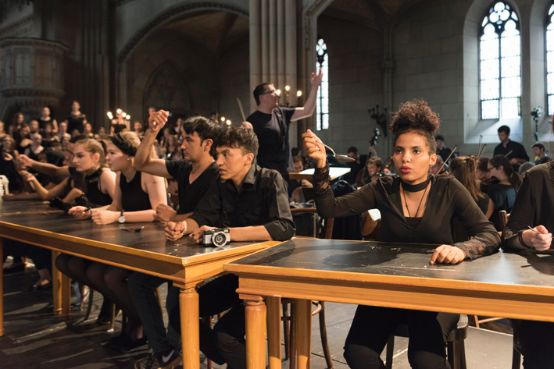
Photo: Christian Flierl






